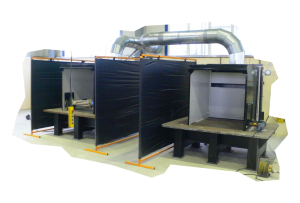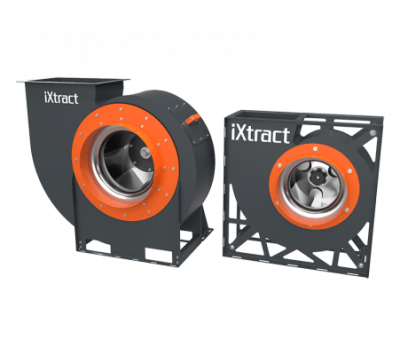When a family-run bakery in Liverpool upgraded to larger premises, the owners thought they had room to grow. What they hadn’t planned for was the flour dust. Within weeks, a fine white layer coated the counters and equipment, no matter how often the place was scrubbed.
To tackle it, the managers decided to leave windows open and set up fans, hoping to push the air around and keep things fresh. But instead of solving the problem, the dust simply spread further. Staff began coughing, and even customers noticed the irritation in the air. What could have been wrong?
The mistake wasn’t in their effort; it was in the method.
By relying on open windows and fans, the bakery was using general ventilation. But what they really needed was local exhaust ventilation (LEV).
What is General Ventilation?
General ventilation involves moving air through windows, fans, or HVAC systems to keep environments comfortable and fresh. The principle is simple: mix contaminated airflow with cleaner circulation until the risk is reduced.
This approach works well for odours, heat, and very low-risk airborne particles. It’s why an office relies on air conditioning, and why a warehouse might use roof fans to disperse fumes from vehicles moving in and out. But general ventilation has clear limits. It does not remove contaminants at their source; it simply redistributes them.
How Local Exhaust Ventilation Works
Local exhaust ventilation operates in a far more targeted way. Instead of addressing the air across an entire room, LEV captures contaminants the moment they are released. With hoods, ducts, filters, and fans, these systems pull in dust, fumes, or vapours before workers breathe them in.
Think of a welder’s fume hood or the extraction arms often seen above laboratory benches. These systems exist for protection rather than comfort. For substances that trigger asthma, damage lungs, or cause long-term illness, LEV delivers the highest standard of control.
In the bakery’s case, LEV meant fitting extraction hoods above mixing stations, capturing flour dust as soon as it became airborne. Within weeks, the layer of dust that once covered the premises disappeared, and the coughing eased.
Comparing the Two Approaches
- Control at the source: LEV captures hazards immediately, whereas general ventilation dilutes them within the wider space.
- Purpose: General ventilation supports comfort and overall air circulation, while LEV protects health and safety.
- Effectiveness: For serious risks such as flour dust, silica, or welding fumes, LEV provides the required solution.
- Compliance: Under UK law (COSHH regulations), employers must control exposure to hazardous substances. In many industries, this means LEV plays a vital role.
Managers often reach first for general ventilation because it feels intuitive: if the air seems stale, move it around. However, moving it without capturing contaminants can create wider exposure. In the bakery’s case, the fans distributed flour particles throughout the entire premises.
The consequences of this choice can be serious. Workers may develop asthma, chronic obstructive pulmonary disease (COPD), or other long-term conditions. Customers and visitors can experience irritation as well. Moreover, from a business perspective, failure to meet regulatory standards risks enforcement action, fines, and reputational damage.
Maintenance and Best Practice
Installing the right system is only half the job. Ventilation, whether local exhaust or general, delivers protection only when it is properly maintained and correctly used. A neglected system can create the illusion of safety while doing very little to safeguard staff.
For local exhaust ventilation, maintenance begins with thorough examination and testing. In the UK, COSHH requires every system to be formally checked at least once every fourteen months. These inspections confirm that hoods, ducts, and fans are still capturing contaminants effectively.
Between these official checks, routine attention is just as important. Operators should monitor airflow indicators, watch for blockages, and stay alert to changes such as reduced suction, unusual noise, or vibration.
Filters also need regular care, since a clogged piece of equipment reduces airflow and undermines the whole system. Staff training makes a crucial difference here: workers who understand how close to the hood they should position themselves and how to recognise signs of reduced performance are far more likely to stay protected.
General ventilation requires the same commitment to upkeep. Airflow must remain balanced so that air circulates evenly across the workplace without creating draughts or leaving stagnant pockets.
Ducts and vents should be kept clean, and fans and motors need regular inspection to ensure they continue moving air at the right capacity.
The most effective workplaces approach ventilation as an active process rather than a one-off installation. They keep clear records of inspections and repairs, engage competent engineers for servicing, and foster a culture where staff feel comfortable raising concerns about air quality.
Lessons Learned
The bakery’s experience shows how easily businesses can confuse fresh air with safe air. Comfort and circulation matter, but they are no substitute for protection at the source. By understanding the difference between general and local exhaust ventilation, employers can move beyond quick fixes and provide lasting safeguards. A fan can make a room feel cooler, but only LEV can stop harmful particles from reaching someone’s lungs.







































